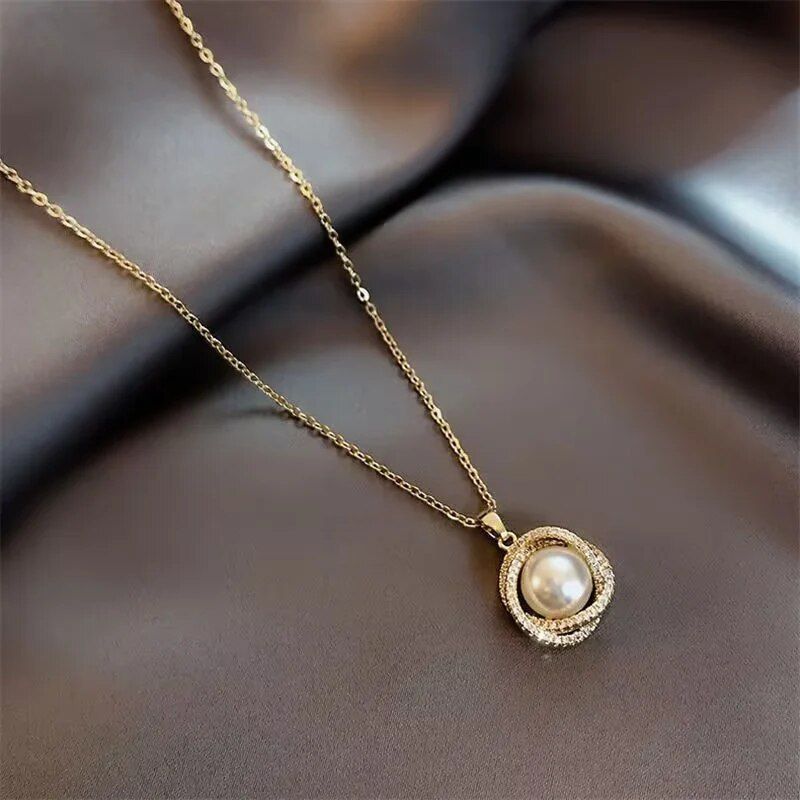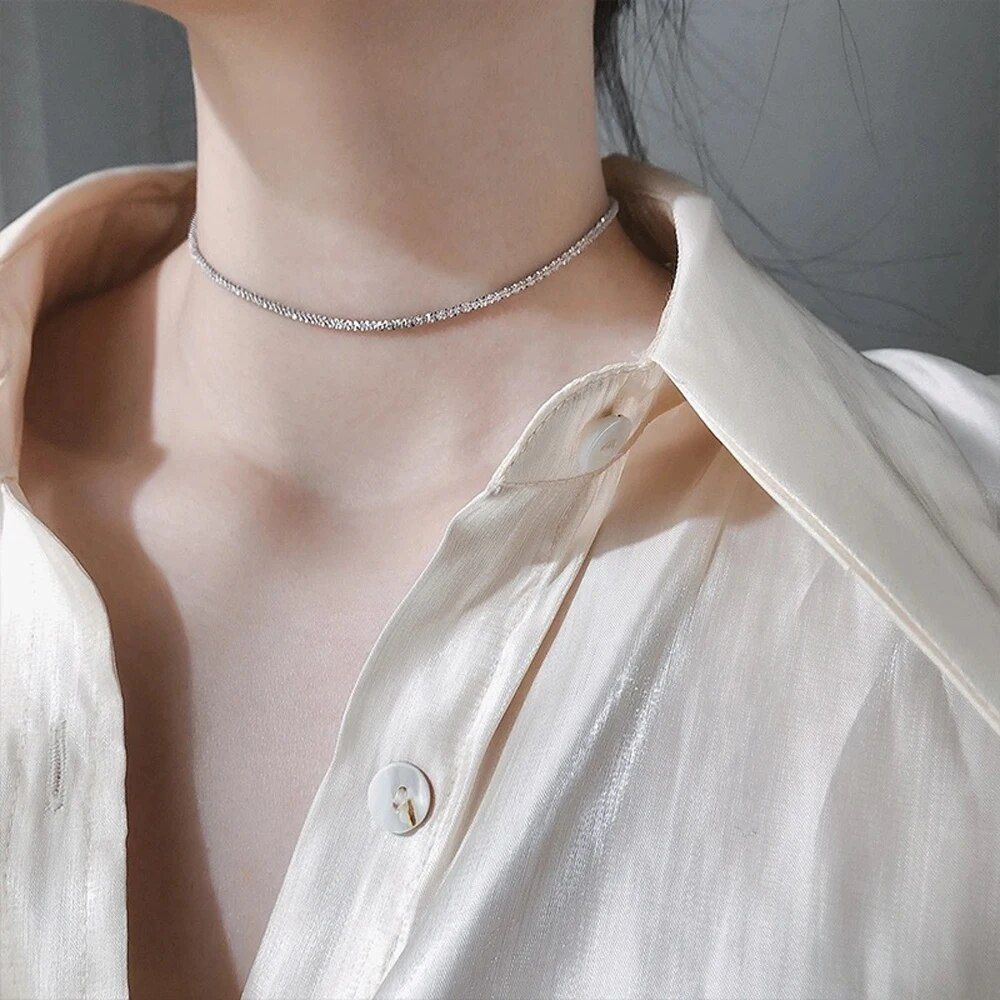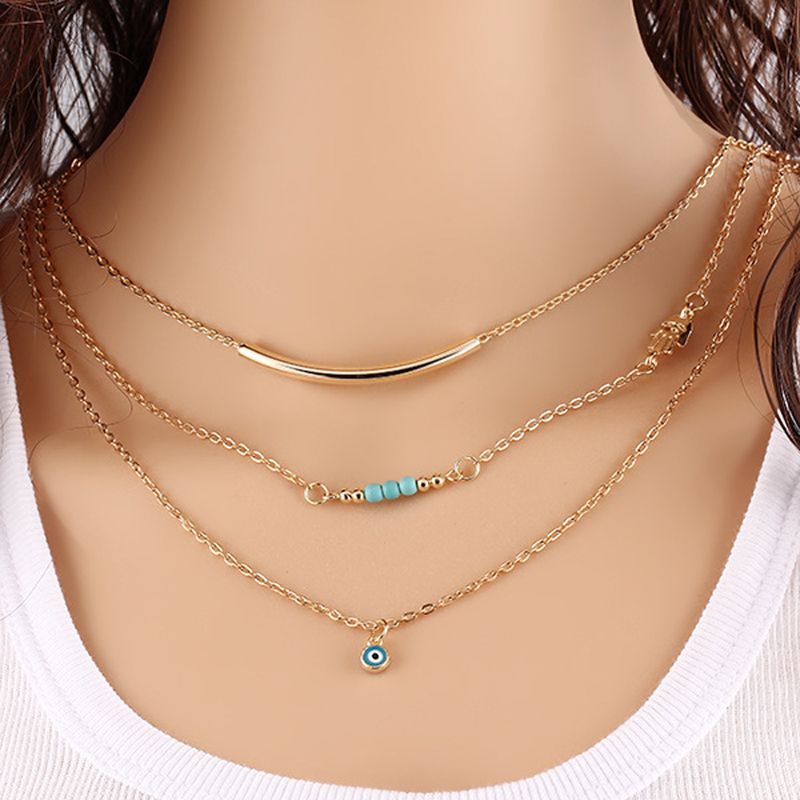Can't distinguish the material of the necklace clearly? That's enough to read this one!
Posted on December 29, 2023
What is the difference between gold, platinum, and platinum?
What is the difference between 14K gold, 18K gold, and pure gold?
Are 925 silver, S925 silver, 925 sterling silver the same?
What is Platinum, What is 18K Gold, and What is S925 Silver?
Haha, isn't it a little dizzy!
Then look down at the horn,
Use super beautiful necklace examples as much as possible to explain to you the problems about the material of the necklace.
I hope you all have a good <( ̄) ̄)> time
First of all, common necklace materials are: silver, gold, copper, pearls, crystals, gemstones (moonstone, prehnite, etc.), diamonds, platinum (white gold), zirconia, etc., let's take a look at the past one by one!!
Note: All the examples of super beautiful necklaces that appear below are from niche brands or light luxury brands, and the materials are basically real money.

silver
925 silver, 990 silver, 999 silver
925 silver: The silver content of the international standard silver is 92.5%, and the imprint is S925 ("S" is the English abbreviation of "Sterling"). S925 silver has a very beautiful metallic luster after polishing, and it also has a certain hardness, which can be set with gemstones, and is the most widely used in making silver jewelry.
The following beautiful little necklaces are made of S925 sterling silver, and everyone should be familiar with the daily feel, which is the "silver" in "real money":
990 Silver: 99% silver content, pure silver imprint is S990. The texture is soft, and it is easy to crack when made into necklaces, rings, etc., and it is barely good, because if the unfortunate silver product is broken, it is easy to recreate it because of the soft texture. I'm afraid it's not interpreting it as Xiao He and Xiao He. Pure silver is often used to make traditional jewelry, such as bracelets, longevity locks, etc.
999 silver: thousand-foot silver, pale in color, extremely soft in texture, very easy to deform when making jewelry, and can not be inlaid with gemstones.

gold
14K gold, 18K gold, 24K gold, pure gold
Haha, is this wave very familiar!
Let's start with karat gold.
Gold K: An alloy formed in proportion to gold and other metals such as silver, platinum, copper, nickel, palladium, etc. Internationally, K is used to denote gold content, that is, gold purity.
The national standard GB11887-89 stipulates that the gold content of each K (abbreviation of English carat, German karat, often written as "K") is 4.166666%, and the next thing is the mathematical problem!
1K = 4.166666%
Note that the state stipulates that jewelry less than 9K (with a gold content of 37.5%) cannot be called gold jewelry
14K = 14 x 4.166% = 58.324% (58.5% gold)
18K = 18 x 4.166% = 74.998% (75.0% gold)
24K = 24 x 4.166% = 99.984% (99.9% gold)
14K gold: high hardness, holding the needs of complex style processing technology, rich shape, commonly used abroad
FOR EXAMPLE, AGATHA'S PUPPIES:
18K gold: high hardness, can be shaped, suitable for inlay, fashionable style, commonly used in China
Super beautiful small necklaces made of 18K gold are really very common:
24K gold: relatively soft, limited in style, can retain value
From 24K gold, we can transition from the concept of K gold to pure gold.
Theoretically, only 100% gold can be called 24K gold, but in reality, there will be no 100% gold, so it is artificially stipulated: the content of not less than 99.6% gold can be called 24K gold, and at the same time, the gold content of pure gold is not less than 99.0%, and the gold content of 1,000 pure gold is not less than 99.9%.
Generally speaking, 24K gold and pure gold are the bosses of the gold jewelry industry, for example, Chow Tai Fook's playground series of snowflake bells are made of pure gold:
Seeing this, we have learned that 14K gold, 18K gold, and 24K gold are distinguished according to the different gold content.
Taking 18K gold as an example, in addition to 75% of the 18K gold, the remaining 25% of the metal can determine the final color of 18K gold, for example, the more silver K gold contains, the greener the color; The more copper it contains, the more purple-red it is.
Note that white gold is more likely to be confused with white gold (platinum) jewelry, and white gold ≠ white gold (platinum).
For example, in the following link, the same necklace, the same 18K gold, there are two colors: white and rose gold (haha, both beautiful!!). This is what is determined by 25%:
The 14K, 18K, and pure gold we mentioned above, although K gold will be divided into different colors, everyone is still talking about the real gold in "real gold and silver", which refers to the material. In addition, there are often "gold-filled" and "gold-plated", which refer to the process, which refers to the process of "wrapping" or "plating" the necklace with real gold using different processes.
Real gold, gold-filled, gold-plated
Real gold jewelry is pure 14K gold/18K gold and other gold products, such as this simple geometric triangle shape small necklace, which is 14K gold real gold jewelry:
Gold-filled jewelry refers to jewelry that wraps gold leaf with high-temperature welding or mechanical force on the outside of other materials. Gold-filled jewelry requires that the material used must be higher than 10K gold, and the amount of gold used must be greater than 1/20 of the total amount of jewelry.
Because if you want to call yourself gold-filled jewelry, there is a rigid requirement for gold content, and the gold-filled jewelry that has passed the process is usually thicker and not easy to wear and fade.
For example, in the product description of the little fairy necklace below, there is a clear statement that the whole body is 14K gold filled in the United States, with a gold content of 1/20:
For example, the following beautiful little daisy necklace is S925 silver plated 18K gold jewelry:
kay, that's all for the gold part, let's take a look at a white gold (platinum) horn that is easy to confuse with white K gold!
Platinum
PT850、PT900、PT950、PT990、PT999
Platinum (bó) gold, also known as platinum, the English word is Platinum, referred to as PT, PT900, PT950 and the above silver jewelry S925, S990, S999 naming rules are the same, respectively refers to the material contains 90%, 95% platinum.
Note that the state stipulates that jewelry with a platinum content of less than 85% cannot be called platinum jewelry
and the concept of silver and gold is the same, platinum also has the concept of platinum, and platinum with more than 99% content is called platinum, and the imprint is PT990 and PT999
Platinum is a natural white precious metal, originally there was no such substance on the earth, 2 billion years ago, meteorites hit the earth, only to bring platinum. Platinum is very rare, even rarer than gold. Judging by the total amount of platinum that has been detected globally, if platinum is poured into an Olympic-sized pool, it is not deep enough to cover the top of the feet, but if gold is poured into that pool, at least three pools can be filled!
From the perspective of the annual production of platinum in the world, it is only 5% of gold, and the amount of platinum consumed by the jewelry industry is only 3% of gold, which can be said to be very, very rare and precious, and was once known as the "king of precious metals". Platinum is chemically more stable than gold, and its white luster is timeless, a never-fading property that, like diamonds, is often seen as a symbol of eternal love.
Strictly speaking, only platinum can be called white gold, but white gold is often referred to as white gold in the market, which is easy to confuse. Next, let's take a look at the example of a beautiful platinum necklace.
For example, the following 3 pendants/necklaces of Chow Tai Fook are all PT950 platinum products, which are very elegant:
The first two are pendant models, note that only the pendant does not have a chain!!
For another example, the following Chow Tai Fook 3 Galaxy series necklaces are all made of PT950 platinum and 990 gold, haha, it is also very eye-catching:
Finally, the maintenance method of platinum is also very simple, soak it in soapy water, wipe it with a soft-bristled toothbrush or soft cloth, and dry it with a soft cloth.
Okay, so we've talked about the concepts and connections of silver, gold, and platinum.
How, do you know more about the material of the necklace? If you like the article or like one of the necklaces mentioned above, should you consider:


Vintage Style Simple Natural Freshwater Pearl Chain Necklaces For Women Wedding Love Gift Necklace Fashion Glamour Jewelry


New Fashion Four Pearl Choker Necklaces Girl Summer Luxury Baroque Pearl Pendant Clavicle Chain For Women Jewelry Gift


2024 New Trend Sparkling Choker Necklace For Women Elegant Clavicle Chain Necklace Party Wedding Collar Jewelry Gifts


2024 New Fashion Unique Charming Tone Bar Circle Lariat Necklaces For Women Multilayer Chain Necklaces Party Jewelry Gift
Cart
0 Item(s)
